La Sal Mountains, Utah
The La Sal Mountains rise dramatically out of the desert, towering 9,000’ above the surrounding canyonlands and Moab. The La Sals are known for their groves of aspen, rich amount of wildlife, high summits, and incredible views overlooking Canyonlands and Arches National Park and the Four Corners area. Hidden lakes dot the landscape. Peaks in the La Sals range from ten thousand to just under thirteen thousand feet and include the highest mountains in Southern Utah. The La Sal Mountains are within the ancestral lands of the Ute.
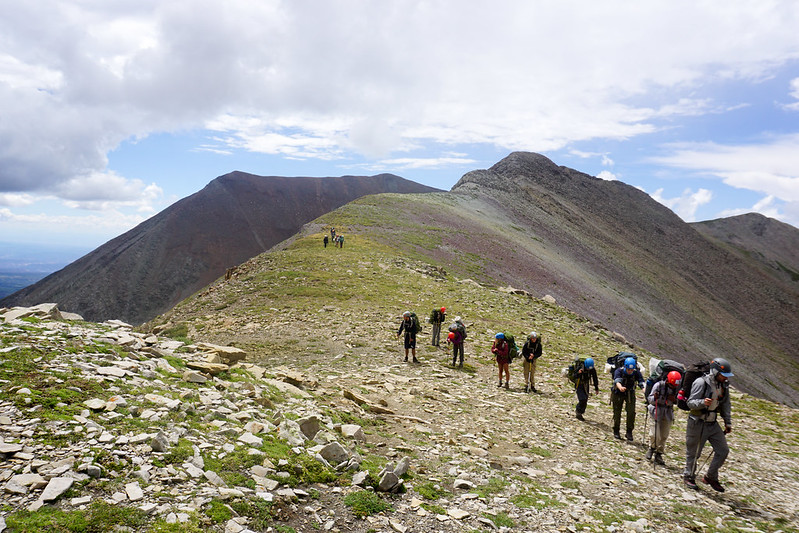
Photo: Dave Erbe |📍Ute lands
Cataract Canyon, Utah
You hear “ALL FORWARD!” shouted above the roar of the rapids by the captain of your raft (that could be you). Next thing you know, you’re digging your paddle blade in deep to meet some of the biggest and best whitewater of the West. One of the most rugged and beautiful canyons in the West, Cataract Canyon takes you through the heart of Canyonlands National Park. You will learn how to guide a whitewater raft as you float past natural wonders and ancient ruins to the confluence of the Colorado and Green Rivers while preparing for what awaits downstream. The Colorado River roars through 29 exciting rapids that rate with those of the Grand Canyon in power and difficulty, including the famous Mile Long Rapids and “the Big Drops.” In the nearby canyons, fantastic rock shapes carved by the whimsical forces of nature await you as your group ventures off-river to jaw-dropping views. This region is located within the ancestral lands of the Ute.
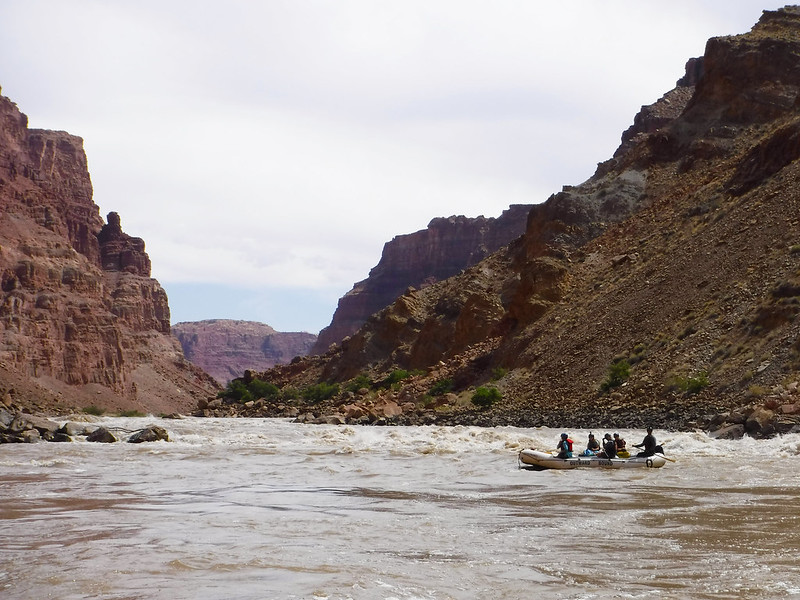
Photo: Olivia Schneider |📍Núu-agha-tʉvʉ-pʉ̱ (Ute) lands
Moab, Utah
The most spectacular aspects of the Utah landscape are the hidden treasures found within its vast canyon networks, formed by millennia of wind and water. The canyons are composed of a spell-binding labyrinth of towering walls, arches, and slot canyons just waiting to be explored. On course, these vibrant formations are a geological playground for scrambling and teamwork. Climbing courses get to experience the beauty of these canyons up close and from high above the trees. With red rock walls and towers standing hundreds of feet high, it’s no wonder that Utah's canyon country is a world-renowned climbing destination. The desert ecosystem is characterized by aromatic plants like sagebrush and birds soaring high above canyon walls.

Photo: F4D Studios |📍These regions are the ancestral lands of the Ute, Cheyenne, Arapaho, Sioux, Eastern Shoshone, Jicarilla Apache, and Pueblos Nations.
What is a land acknowledgment?
At the Colorado Outward Bound School, we include land acknowledgments in our work as a formal way to recognize and respect the traditional territories and Indigenous Peoples as stewards of the land. It is important to understand and acknowledge the comprehensive past, present, and future of the places we travel and to seek to understand our role therein. To recognize the land is an expression of gratitude and appreciation we give to the Indigenous Peoples who have been living and working on the land from time immemorial. Read more about land acknowledgments at Outward Bound here.
Alpine Backpacking
Alpine Backpacking will develop a foundational outdoor skillset for students allowing comfortable living during course. Traveling mostly above treeline, students will carry everything they need - food, shelter, clothing and gear – allowing them to go deep into the wilderness where few people go. Backpacking provides a sense of freedom, allowing students to eat when hungry, set up camp when tired, and exercise complete control over what is accomplished each day. The simplicity of backpacking gives students the opportunity to focus both internally on their own thoughts, as well as externally to connect deeply with others as they talk, sing, play games and spend time together without distraction. With the Rocky Mountains as a backdrop, students are introduced to backpacking with lessons in basic travel and camping techniques. As this section progresses, students learn Leave No Trace techniques, map and compass navigation, camp craft, and obtain an understanding of the area’s human and natural history.
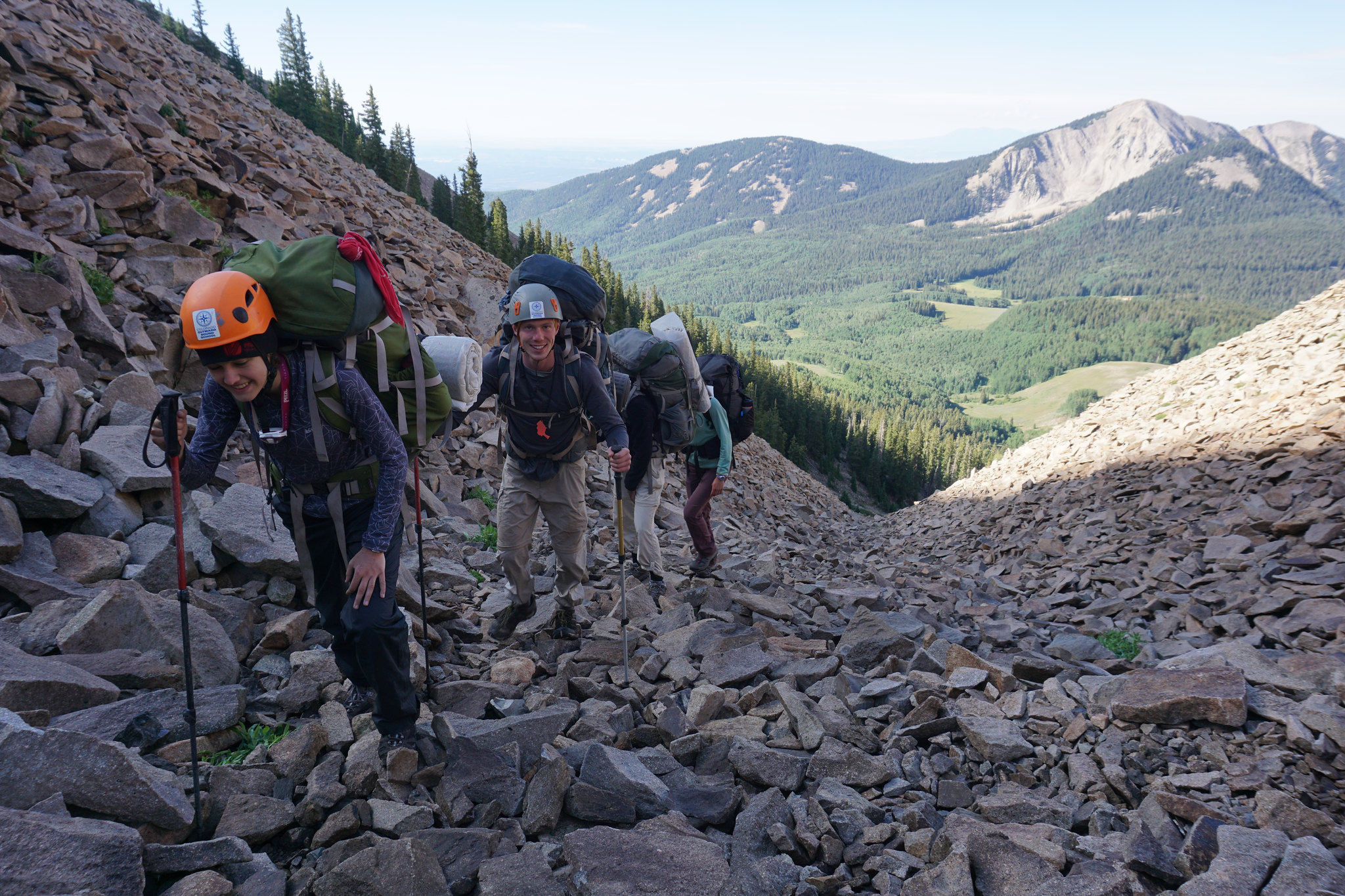
Photo: Dave Erbe |📍Núu-agha-tʉvʉ-pʉ̱ (Ute) lands
Non-Technical Canyoneering
With your crew, you will journey through the intriguing and difficult-to-explore canyon country, taking in the infinite shapes of the arches, towers, buttes, amphitheaters, overhangs, and domes. While doing this, you will be carrying a 45 to 60 pound backpack which will have all you need to thrive in the wilderness. Sometimes students will shed their backpacks for smaller daypacks to navigate into narrow slots or explore thousand-year-old cliff dwellings and rock art. Crews camp on expansive rock slabs, stopping along the way to explore microclimates and canyon ecosystems. All the while, you continue learning how to use maps and compasses, to cook meals for yourself and your crewmates, negotiate slickrock obstacles, find water, and live comfortably in the immense canyons. The days can be long and hard, but the canyons reward you with their jaw-dropping beauty. You will spend time in an incredible area where life becomes more in tune with the essentials of traveling through a landscape of rock, sand, sky -- feeling the sunshine on your face and watching the setting sun give way to stars.
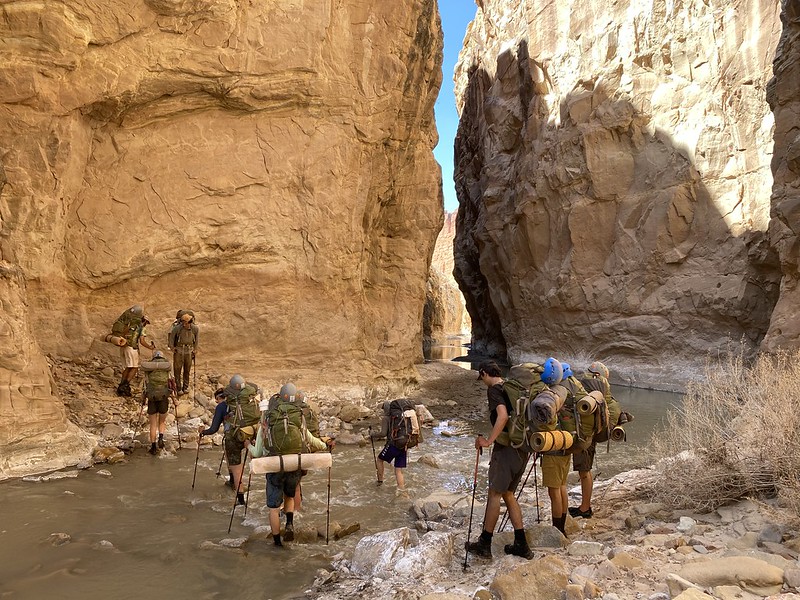
📍Núu-agha-tʉvʉ-pʉ̱ (Ute) lands
Rafting
On the river, each day is spent learning to navigate various obstacles and how to anticipate the forces of the current from upstream. You and your companions will work to become a team, coordinating your spacing and paddle strokes. You will have an opportunity to be the captain of your crew and put to use what you’ve learned as you maneuver your raft through Class 2-4 rapids. Interspersed between the rapids are flat-water sections where there is a current, but no whitewater. At times, you will take advantage of this calm water to hone your skills and enjoy the view. Time in a raft is ideal for getting to know each other and forming boat pride, laughing your way downriver as you relax into river life. Afternoons can bring strong up-canyon winds, which create a challenge as you dig in to reach the camping destination. Rafting connects you to the river: the oasis of flora and fauna (including humans!) that rely on the river to survive in the desert. The soaring canyons complement the roar of whitewater, as well as the silences that can only be found in such remote beauty.
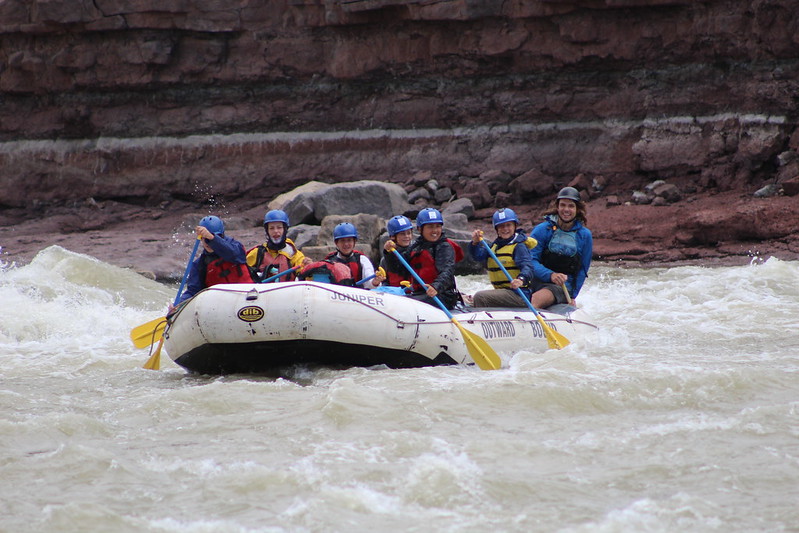
Photo: Curtis Huey |📍Núu-agha-tʉvʉ-pʉ̱ (Ute), Diné, and Pueblos lands
Solo
Solo is a time when you’ll get the opportunity to spend time alone during course. With sufficient food and equipment, your Solo will be a chance to reflect on your course experience, journal, and connect with nature. Depending on your course length and environmental factors, Solo can range from 30 minutes to an overnight experience. You will not travel during this time and your Instructors may check on you occasionally. Your solo site will be close enough to your Instructors in case of emergency, but far enough removed to enjoy solitude. Many students are initially nervous about solo, but later recall it as one of the highlights of their course.
Service
Service is a pillar of the Outward Bound experience. On each course, students learn to practice intentional service to themselves, to others and to the environment. This may look like practicing self-care or supporting a crewmate who is having a hard day. Participants also learn to Leave No Trace ethics, practicing service to the environment by preserving and respecting the fragile ecosystems they encounter. Students experience firsthand the social and emotional benefits of acts of service. They are encouraged to bring this ethic of care to their life back home.
The following is an example of what your itinerary may look like. Your actual course plan will vary according to weather, your group’s skills and abilities, and Instructor preferences.
Day 2-9: Alpine Backpacking, Peak Attempts, Hiking, Solo, Resupply Canyon Day
Day 10-15: Canyon Backpacking
Day 16-21: Launch on Cataract Canyon, Whitewater Rafting, Hiking
Our expeditions help students grow into the best version of themselves. We use adventure in the outdoors to help students discover their strengths and build authentic connections with their peers. Compassion for oneself and others is foundational to the Outward Bound experience. As students develop outdoor skills, they also gain confidence and leadership tools that will last a lifetime. Course outcomes include:
- Belonging – students form deep connections founded upon respect, inclusion, and compassion
- Reflection – students learn self-awareness and practice empathy towards others
- Physical Engagement – students develop awareness and confidence in their bodies
- Courage – students develop the confidence to speak up for themselves and persevere through challenges
Watch to Learn More
Tuition
You can pay your tuition online through your Applicant Portal or make the payment over the phone by calling 720-381-6589.
If your payment is not received by the due date listed in your Enrollment Email and on your Applicant Portal, you will risk losing your spot on course and your $500 deposit. Please review our Admissions and Cancellation Policies.
Travel Insurance
Airfare, travel costs, and non-refundable tuition payments are expensive. Insurance to protect your trip and course is strongly encouraged. We recommend insuring these costs from the third-party provider InsureMyTrip. This provider has coverage options that include travel costs and non-refundable tuition costs. For more information and to receive a free quote, click here.
Click here for COBS COVID-19 Program Practices